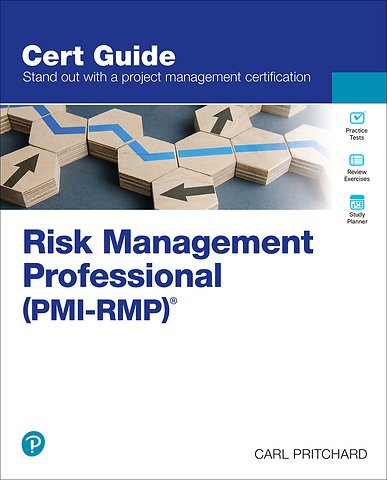Risk Management Professional (PMI-RMP)®
Paperback Engels 2024 9780138108472Samenvatting
Learn, prepare, and practice for the Risk Management Professional (PMI-RMP)® exam success with this Cert Guide from Pearson IT Certification, a leader in IT Certification learning. Master PMI-RMP exam topics Assess your knowledge with chapter-ending quizzes Review key concepts with exam preparation tasks Practice with realistic exam questions
Risk Management Professional (PMI-RMP)® Exam Cert Guide is a comprehensive exam study guide. Author and expert instructor, Carl Pritchard, shares preparation hints and test-taking tips, helping you identify areas of weakness and improve both your conceptual knowledge and hands-on skills. Material is presented in a concise manner, focusing on increasing your understanding and retention of exam topics.
The book presents you with an organized test preparation routine through the use of proven series elements and techniques. Exam topic lists make referencing easy. Chapter-ending Exam Preparation Tasks help you drill on key concepts you must know thoroughly. Review questions help you assess your knowledge, and a final preparation chapter guides you through tools and resources to help you craft your final study plan.
The companion website contains the powerful Pearson Test Prep practice test software, complete with hundreds of exam-realistic questions. The assessment engine offers you a wealth of customization options and reporting features, laying out a complete assessment of your knowledge to help you focus your study where it is needed most.
Well regarded for its level of detail, assessment features, and challenging review questions and exercises, this study guide helps you master the concepts and techniques that will enable you to succeed on the exam the first time.
This book will prepare you for the PMI-RMP® examination, enabling you to Learn the different roles in an effective project risk management organization Understand the different risk practices in waterfall, hybrid, and agile organizations Grasp the distinctions between risk appetites and attitudes Effectively identify and manage risk tolerances and triggers Get others to participate in the risk management process appropriately Identify risk using a variety of different tools Create risk registers and repositories for posterity Develop strategies and responses for both threats and opportunities Generate risk approaches based on project assumptions Analyze risks both qualitatively and quantitatively Recognize when workarounds are the only possible course of action Close out and retire risks as appropriate
Specificaties
Lezersrecensies
Inhoudsopgave
Rubrieken
- advisering
- algemeen management
- coaching en trainen
- communicatie en media
- economie
- financieel management
- inkoop en logistiek
- internet en social media
- it-management / ict
- juridisch
- leiderschap
- marketing
- mens en maatschappij
- non-profit
- ondernemen
- organisatiekunde
- personal finance
- personeelsmanagement
- persoonlijke effectiviteit
- projectmanagement
- psychologie
- reclame en verkoop
- strategisch management
- verandermanagement
- werk en loopbaan

